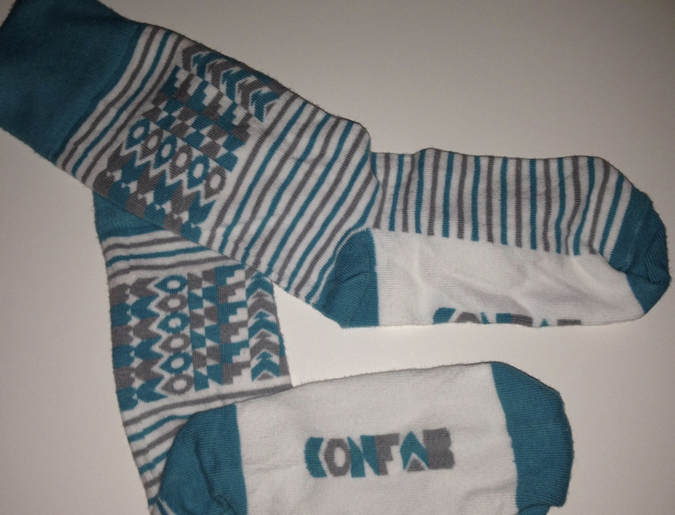Attending Brain Traffic’s Confab Intensive in fabulous Denver, CO was one of the best decisions I’ve made in 2017. As a freelancer I don’t always get the chance to interact with, and learn from, colleagues on a daily basis. I had a hunch Confab would fill that void and I’m thrilled my gut instincts were right—it’s the best conference I’ve ever attended. We got socks at registration and cake at the finale (though I missed my slice so I could catch my flight), with tons of learning in between. What did I learn? Here’s my Confab top five!

I’ll be going places in my Confab socks…
Looking for standards? You aren’t alone!
I love the “squishiness” of content strategy projects. There are some universal truths that guide you, but there’s no clear-cut path to follow along the way. That’s where things get fun. Ever since I started working in content strategy I’ve always been secretly uneasy that something’s not following a standard I just don’t know about.
Turns out, so is everyone else! In every session I attended, I heard that the rule of thumb is, there is no rule of thumb. Since every project is different the organization you work for, the client’s business objectives, and the project requirements will strongly influence the standards and tools you’ll use. Realizing this brought me great relief and solidified my belief that curiosity is one of the best traits you can have in content strategy. Learn as much as you can from your colleagues. See what has worked on other projects, and figure out how to tweak and adapt if for the next one. Read what your peers have to say. And book your trip to the next Confab!
Content models are glorious, and mysterious
Creating a content model is a key part of any content strategy project. When I first heard about content models I had no idea what they were, and they freaked me out. I likened them to the Loch Ness Monster—a mysterious force that secretly rules things and takes shape just when you see it.
I wasn’t that far off. A content model is where you structure your content, show how the pieces connect, and create patterns that make content easy to manage and maintain. Creating one requires creativity and good old fashioned work, and try not to skip it. Once upon a time I had to author content that didn’t have a clear model. It was brutal, and I felt nauseous every time I had to publish something. I now see how all that pain could have been avoided if we’d created a strong content model with the UX and tech team up front. During his session Jeff Eaton summed up the content modeling process beautifully: “No one tool solves it, no one tool captures it.” Content models are glorious and mysterious. Embrace them. (This one might be #1 of my Confab top five, even though it’s second.)
Definitions are critical
In a discipline where standards vary and bespoke content models abound, make sure you and your colleagues are speaking the same language. Are “content fields” and “content types” the same thing, or do they have different meanings? When your developer says “module” does your copywriter hear “paragraph?” Small misunderstandings can create big problems later on. Don’t be afraid to define and claim anything—a process, term you heard at your last job that is more accurate than the one you’re hearing now, or a workflow —that might cause confusion along the way.

Denver’s Union Station looks just like a library – great place to unwind during the conference.
Great presenters + relatable examples = memorable learning
I’m a veteran of workshops, sales meetings, and corporate kickoff events. I know how hard it is to put an event together, and know it’s even more difficult to deliver a meaningful presentation. The presenters at Confab were incredible; I learned something at every session. I especially loved how each presenter used relatable examples to keep things interesting. I can’t tell you how wonderful it was to see Laura Creekmore of Creek Content break down George Clooney’s IMDB page to show us what content structure is all about.
Content projects take time, and require internal selling (convincing?) along the way
Content strategy isn’t exactly new, but a lot of people don’t fully understand it. I think this is a holdover from the early days of the web when content was typically the last part of a web project. Sites were Lorem-ipsumed out and given to a writer (or a designer, or whoever), right before launch date, to change the words into English.
Things have changed. Content is a key part of every project and it takes time, resources, and collaboration with all kinds of departments to get it right. Every session mentioned this, especially the one on governance, which can be particularly difficult to implement and maintain. We all had similar challenges, and it was fun to help each other think about how to approach them in new ways.
So there you have it, my Confab top five. I’m sad I missed my piece of Confab cake, and hope they host next year’s conference in a city that has late flights back to New York. Until then, I’m building on what I’ve learned so I can help my clients create more effective content.